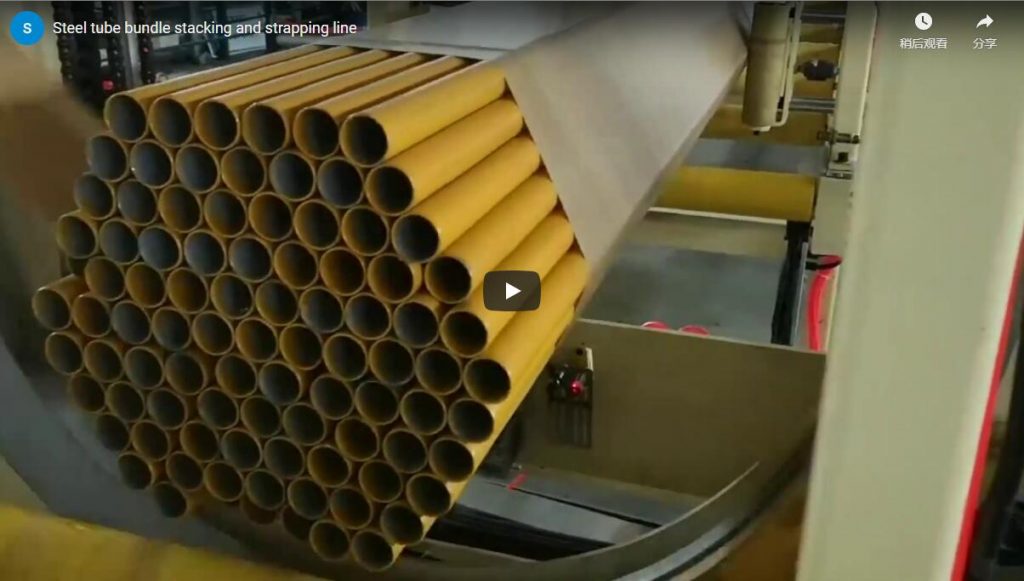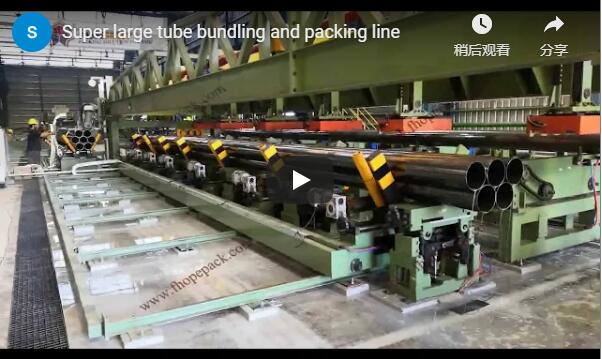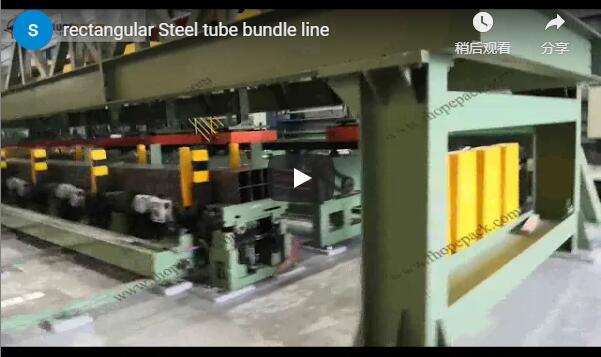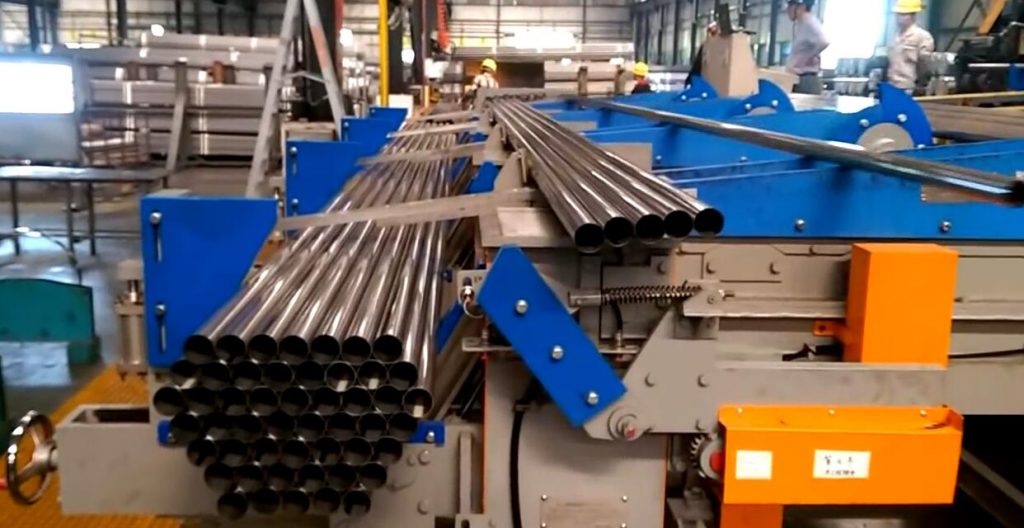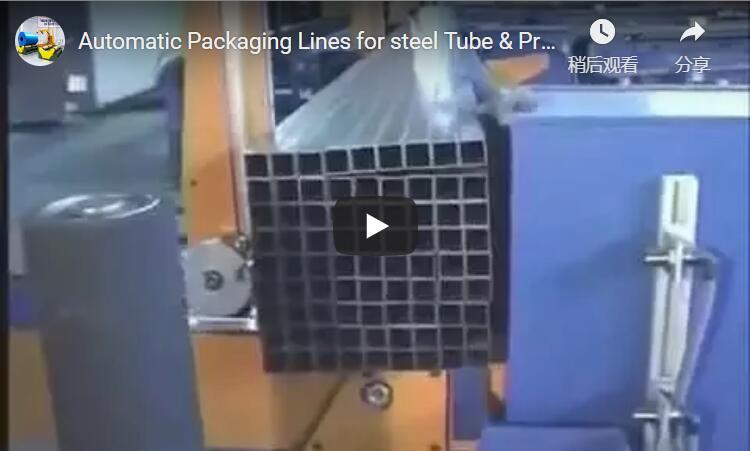Optimizing Steel Tube Handling: A Deep Dive into Automatic Bundle Stacking and Packing Lines
The efficient handling and packaging of steel tubes and pipes present significant logistical challenges in manufacturing and distribution environments. Manual or semi-automated processes often struggle with consistency, speed, and worker safety, particularly when dealing with heavy or long products. Fully automatic steel tube bundle stacking and packing lines offer a robust solution, integrating multiple stages into a seamless workflow. This article explores the design, components, technical specifications, and operational benefits of such systems, drawing parallels with the rigorous standards expected in industrial automation.
1. System Overview: From Infeed to Wrapped Bundle
An automatic steel tube packing line is a complex, integrated system designed to take individual tubes, arrange them into precisely configured layers, form stable bundles (often hexagonal for optimal density and stability), stack these bundles, and finally secure them for transport through strapping and optional wrapping. The core objective is to minimize manual intervention, maximize throughput, ensure bundle integrity, and enhance operational safety.

2. Key Components and Technical Breakdown:
The typical line incorporates several specialized modules working in concert:
2.1. Automatic Rollers In-feeding Conveyor
- Function: Receives individual steel tubes from upstream processes (e.g., cutting, threading) and transports them controllably towards the layering station.
- Design & Structure: Features heavy-duty rollers (often PU-coated or V-shaped) designed to handle specific tube diameters and weights without causing surface damage. Variable speed drives (VSDs) allow synchronization with the rest of the line. Guide rails ensure proper alignment.
- Technical Data Example:
- Conveyor Speed: 5-20 m/min (adjustable)
- Max Tube Length: 6m - 12m (customizable)
- Load Capacity: Up to 500 kg/m
2.2. Steel Tube Pick Up and Lifting Machine
- Function: Selects the required number of tubes from the infeed conveyor and lifts them to the layering position.
- Design & Structure: Often employs electromagnetic lifters (for ferrous tubes) or mechanical clamping systems. Precision sensors detect tube presence and position. Robust lifting mechanisms (e.g., servo-driven ball screws or hydraulic systems) ensure accurate placement.
- Technical Data Example:
- Lifting Capacity: 100 kg - 1000 kg (per cycle)
- Cycle Time: 10-30 seconds (depending on tube count and travel distance)
2.3. Steel Tubes Layers Making Machine (Row Forming)
- Function: Arranges the lifted tubes into a predefined layer or row configuration (e.g., a specific number of tubes side-by-side). This is crucial for building the final bundle shape.
- Design & Structure: Utilizes pusher arms, aligning mechanisms, and stoppers controlled by PLCs based on the selected bundle recipe. Precise positioning is key for forming stable hexagonal or square bundles later.
- Technical Data Example:
- Layer Width Capacity: Up to 1000 mm
- Positioning Accuracy: +/- 2 mm
2.4. Steel Tube Bundle Making Machine (Hexagonal/Square Forming)
- Function: Receives successive layers of tubes and carefully arranges them into the final desired bundle shape, typically hexagonal for efficient packing.
- Design & Structure: May incorporate shaping guides, movable side supports, and clamping devices that gently form the bundle layer by layer. Sensors monitor the bundle formation process.
- Technical Data Example:
- Bundle Size Range: 200 mm - 800 mm diameter/width (typical)
- Max Bundle Weight: 1 ton - 5 tons (system dependent)
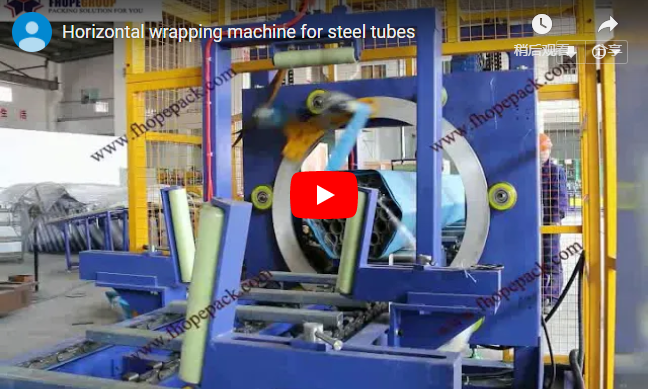
2.5. Automatic Stacking Machine
- Function: Takes completed individual bundles and stacks them, often onto pallets or dunnage, to a predetermined height or count for storage or transport.
- Design & Structure: Can utilize overhead gantry robots, articulated arm robots, or dedicated lifting frames with clamps designed to securely grip the entire bundle. Integrated sensors prevent collisions and ensure accurate placement.
- Technical Data Example:
- Stacking Height: Up to 2 meters
- Stacking Capacity: 2-6 bundles per stack (typical)
2.6. Steel Tube Bundle Out-feeding Machine
- Function: Transports the completed stacks of bundles away from the stacking area to the next stage (strapping/wrapping) or a holding zone.
- Design & Structure: Typically uses heavy-duty chain conveyors or roller conveyors capable of handling the significant weight of stacked bundles. May include turntables or shuttle cars for directional changes.
- Technical Data Example:
- Conveyor Speed: 3-10 m/min (adjustable)
- Max Stack Weight Capacity: Up to 10 tons
2.7. Steel Tube Bundle Strapping Machine
- Function: Applies high-tensile steel or PET straps around the individual bundles (or sometimes the entire stack) to secure the tubes tightly, preventing movement during handling and shipping.
- Design & Structure: Integrates an automatic strapping head that feeds, tensions, seals (usually via welding or friction seal for PET, crimping for steel), and cuts the strap. Can be configured for multiple straps per bundle at specific locations. Often includes a mechanism to rotate the bundle or move the strapping head for circumferential strapping.
- Technical Data Example:
- Strap Type: Steel (19-32mm) or PET (16-25mm)
- Tension Range: 2000 N - 8000 N (adjustable)
- Cycle Time: 15-40 seconds per strap
2.8. Steel Tube Bundle Wrapping Machine (Optional)
- Function: Applies stretch film around the strapped bundles or stacks for added protection against environmental factors (dust, moisture) and further stabilization.
- Design & Structure: Commonly uses a rotating ring or rotating arm mechanism that orbits the bundle stack while dispensing stretch film. Features adjustable film tension and overlap control.
- Technical Data Example:
- Film Width: 500 mm (standard)
- Rotation Speed: 15-30 RPM
- Cycle Time: 60-120 seconds per stack
3. System Integration, Control, and Safety
The entire line operates under a unified control system, typically managed by a central Programmable Logic Controller (PLC). Human-Machine Interfaces (HMIs) provide operators with intuitive control, recipe management (for different tube sizes and bundle configurations), status monitoring, and diagnostics.
- Integration: Precise synchronization between modules is achieved through sensors (photoelectric, proximity, laser) and encoder feedback, ensuring smooth handoffs and efficient flow.
- Safety: Conforming to international safety standards (e.g., ISO 13849) is paramount. Standard features include physical safety fencing, access gates with interlocks, light curtains at key interaction points, and emergency stop buttons throughout the line.
4. Technical Data Comparison: Automated vs. Manual/Semi-Auto
| Parameter | Manual / Semi-Auto | Fully Automatic Line | Key Advantage |
|---|---|---|---|
| Throughput | Low - Moderate | High - Very High | Efficiency, Speed |
| Bundle Consistency | Variable | Highly Consistent | Quality, Stability |
| Labor Requirement | High | Low (Supervisory) | Cost Savings |
| Operator Safety | Higher Risk (Lifting) | Significantly Improved | Reduced Injury Risk |
| Footprint | Variable, can be large | Defined, often optimized | Predictable Layout |
| Flexibility | High (manual adjustment) | Moderate (Recipe-based) | Requires Planning |
| Initial Cost | Low | High | Investment Required |
| Operational Cost | High (Labor) | Lower (Energy, Maint.) | Lower Long-Term Cost |
Note: Specific values depend heavily on the exact configuration and application.
5. Design Philosophy and Structural Considerations
These systems are built for demanding industrial environments:
- Robust Construction: Heavy-gauge steel frames, durable components, and high-quality bearings ensure longevity and reliability under continuous operation.
- Modular Design: Often designed in modules, allowing for easier transport, installation, and potential future reconfiguration or expansion.
- Customization: Lines are frequently tailored to specific customer needs regarding tube dimensions (diameter, length, wall thickness), weight, required bundle formats, and desired throughput rates.
6. Personal Operational Experience & Benefits
From an operational standpoint, transitioning to a fully automatic line dramatically changes the workflow:
- Reduced Physical Strain: Eliminates heavy manual lifting and repetitive motions associated with bundling and stacking tubes, directly improving worker ergonomics and reducing injury rates.
- Ease of Use: Modern HMI interfaces simplify operation, allowing operators to select predefined recipes, monitor production, and troubleshoot issues with minimal specialized training.
- Consistent Output: Automation removes human variability, resulting in uniform bundle shapes, dimensions, and strap tensions, which improves downstream handling and customer satisfaction.
- Increased Throughput: The system operates continuously at optimized speeds, significantly outperforming manual methods and enabling faster order fulfillment.
- Data Logging: Advanced systems can log production data, track OEE (Overall Equipment Effectiveness), and provide insights for process optimization.
7. Conclusion: Investing in Efficiency and Safety
Automatic steel tube bundle stacking and packing lines represent a significant technological advancement over traditional methods. By integrating robust mechanical design with sophisticated automation controls, these systems deliver substantial benefits in terms of throughput, consistency, labor reduction, and operational safety. While requiring a significant initial investment, the long-term operational cost savings, improved product quality, and enhanced workplace safety provide a compelling return on investment for steel tube manufacturers and processors aiming for competitive, efficient, and safe operations.
More information:
https://www.fhopepack.com/Automatic-Steel-Tube-Packing-Line/
For inquiries, please contact: info@fhopepack.com

